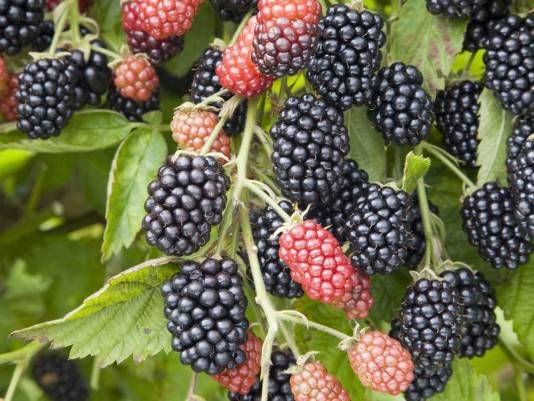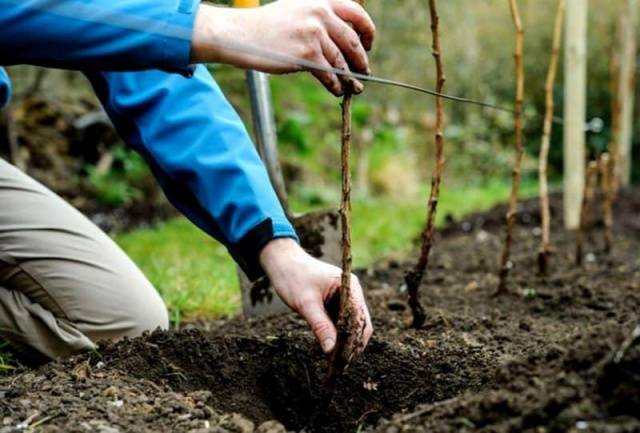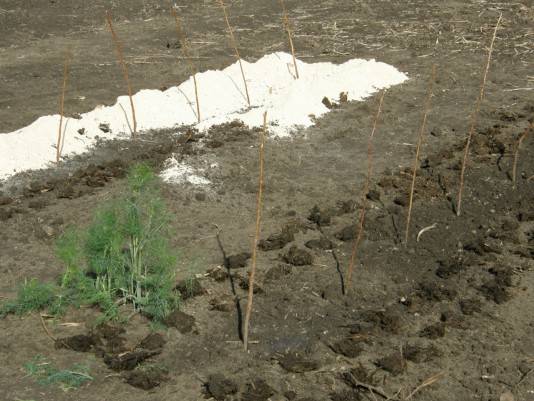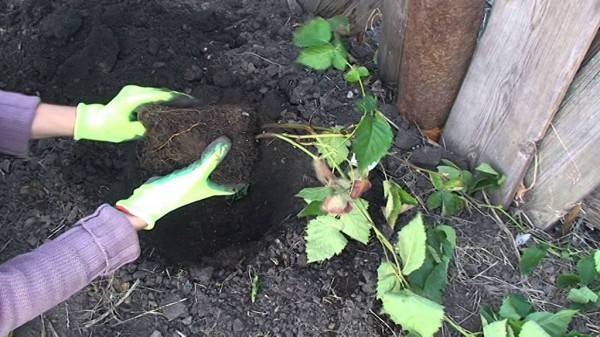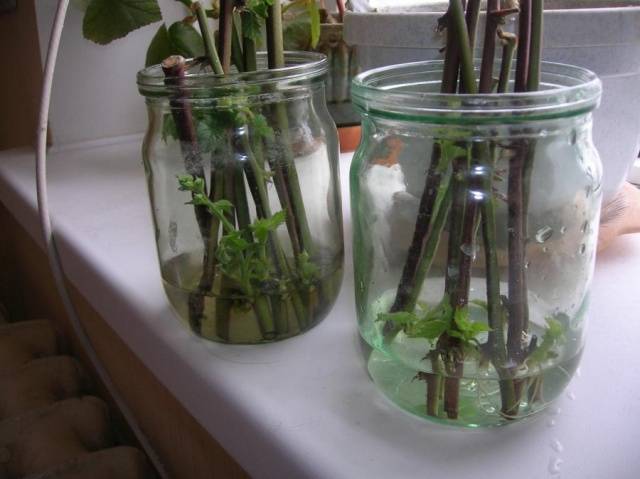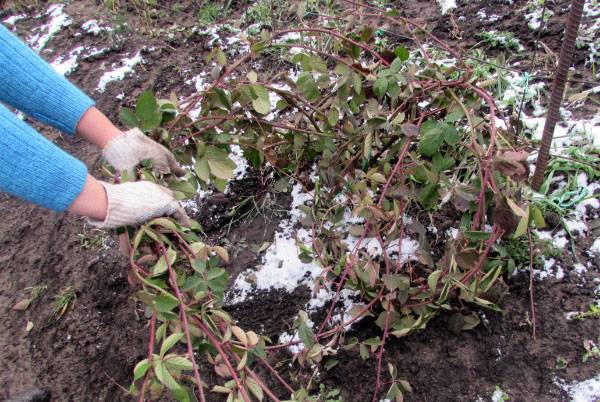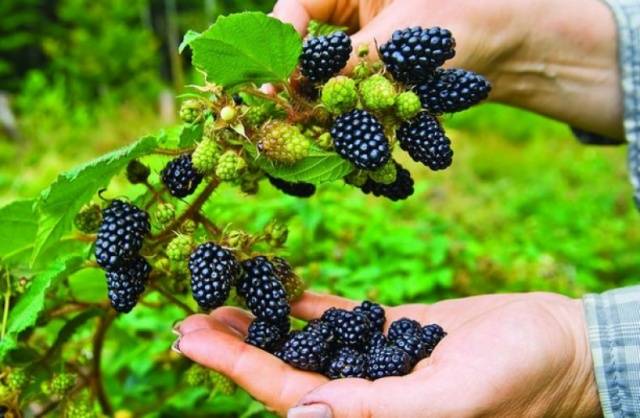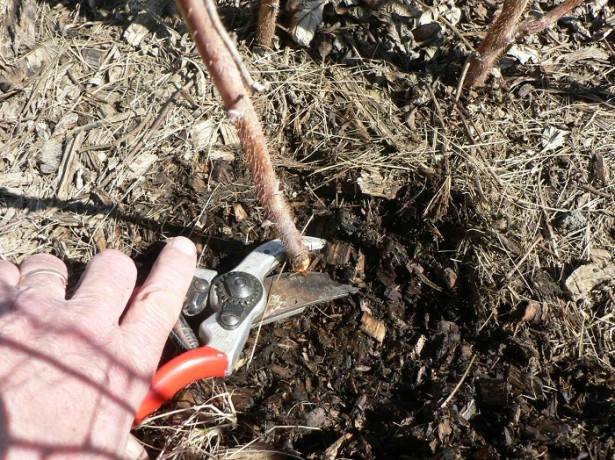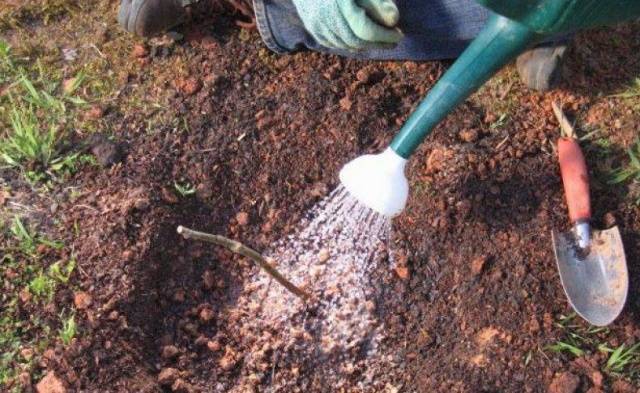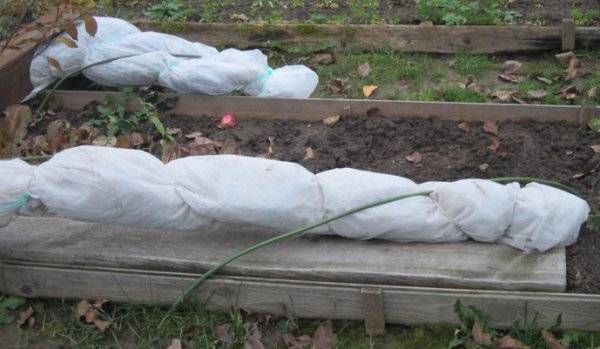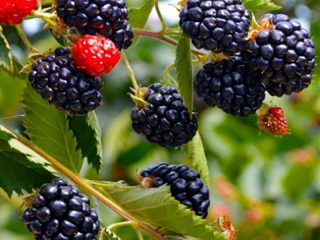Content
Blackberry forest berry is not found in every gardener on the site. The culture is not popular due to uncontrolled sprawl and thorny branches. However, breeders have bred many cultivars that produce large berries and even without thorns on the stems. To grow such a miracle, you need to know how to care for blackberries in the fall, when to prune, which month is better to choose for planting and other subtleties of agricultural technology.
When is it better to plant blackberries: in autumn or spring
The question of determining the planting time of a plant is of interest to any gardener. Both seasons are favorable for blackberries. If agricultural technology and care are not followed, the seedling can die in spring and autumn.
The optimal time for planting a seedling is still autumn. In the south, this season is accompanied by warm rainy weather, which makes maintenance easier. The culture manages to take root before the onset of cold weather, develop immunity, temper over the winter and grow sharply in the spring. The disadvantage of the autumn process is the death of the seedling in case of incorrect determination of the planting date.
Spring planting gives the seedling an incentive to accelerate development. Blackberry quickly grows young roots, expels new shoots. However, for the southern regions, spring planting complicates care and brings many problems. With the onset of early heat and drought, a fragile seedling can die. In addition, during this period, an abundant invasion of pests begins, the spread of fungal diseases.
The video tells about choosing the best time for planting seedlings:
In which month to plant blackberries in the fall
The period of autumn planting of blackberries is optimal for the southern and middle regions. The plant will stably develop the root system until winter, until the soil temperature reaches -4aboutFROM.
In the south, the end of October is considered the best month for planting seedlings. The culture will have time to take root before winter if it is planted in early November. In cooler regions, blackberries are planted from early October.
Site selection and soil preparation
The place for planting seedlings is chosen taking into account the peculiarities of the plant and the ease of caring for it:
- Despite its forest origin, blackberries are light-requiring. The plant requires sun or light partial shade. Under the crown of tall trees or in the shade behind the wall of a building, the berries will be small and sour. Young shoots of the plant stretching towards the sun will block the fruiting branches from the light.
- Blackberries should not be planted in lowlands where melt and rainwater flows, as well as in areas with a constantly high level of groundwater. From oversaturation with moisture, the ripening of the shoots slows down. In winter, such a plant will disappear even with proper care.
- Breeders have bred many frost-resistant blackberry varieties, but still the plant's winter hardiness is weak. For culture, a site well protected from northern winds is chosen.
Loamy soil is better for blackberries. The plant does not take root well on calcareous soil.Sandstones do not suit blackberries with poor nutritional value, as well as poor moisture retention. Bushes are often planted along the fence of the site with an indentation of 1 m from the fence. Preparing the soil before planting seedlings involves digging with a shovel to a depth of 50 cm with the simultaneous introduction of humus or compost in an amount of 10 kg / m2... Mineral fertilizers are additionally added to organics: 50 g of potassium, 100 g of superphosphate.
Any plants can grow in front of the blackberry on the site. Only nightshade and berry crops are considered bad predecessors.
Planting blackberries in autumn with seedlings
Blackberry seedlings grown in flower pots are the easiest to plant. The planting material is removed from the container along with a lump of earth. If the seedling grows in a peat cup, then it is planted along with the container.
The hole is dug 10 cm deep from the root with a lump of earth. A stock of space is needed for adding humus. The seedling is lowered into the hole. The side gaps are filled with humus and organic matter is poured on top of it in a thin layer. A blackberry seedling is watered abundantly. After absorbing moisture, the soil around the plant is mulched with a 10 cm layer of peat.
Care for seedlings of autumn planting consists of timely watering in the absence of rain every 6-7 days. Potash fertilizer is mixed into the water. With the onset of frost, watering is stopped.
If the seedling was purchased with an open root system, the hole is dug out according to its size, and a mound is formed from the ground at the bottom. The fibrous root of the plant is spread along the slopes, sprinkled with a mixture of earth and humus, watered, mulched with peat.
When planting several seedlings between straight-growing varieties of kumaniks maintain a distance of at least 1 m.The width of the row spacing is 2 m. Between the bushes of creeping dewweeds maintain a distance of 2 to 3 m.A space 3 m wide is left between the rows.Immediately after planting, the branches of the seedlings are cut to two or three kidneys.
Blackberry propagation in autumn
If your favorite variety of blackberries is already growing on the site, then the culture can be propagated independently before the onset of winter in two ways:
- Layers. The method is considered the easiest and most affordable for a novice gardener. In early October, the stems from the bush are laid on the ground, pinned with pieces of stiff wire. The end of the lash of the plant is covered with earth so that a section with a length of at least 20 cm remains above the ground. After winter, by spring, the cuttings take root. In May, the lashes are cut from the mother bush of the blackberry, transplanted to a new place, provide thorough care.
- Cuttings. The method does not give 100% engraftment of all seedlings, but it is also good in its own way. To make blackberry propagation by cuttings in autumn, in August, 15–20 cm branches are cut from a bush with a pruner. The garden bed is well fertilized with humus. The cuttings are buried in the ground at an angle. The soil around is mulched with peat. Watering is carried out constantly before the onset of frost so that the cuttings do not dry out.
Some gardeners like to sprout the twigs in a jar of water first. When the roots appear, the cuttings are planted in the ground.
Preparing blackberries for winter
All blackberry varieties tolerate heat easily. One fruiting twig of an adult bush is capable of producing up to 200 berries. Cultivated varieties are capable of bearing fruit up to three times per season. However, with the onset of autumn, the gardener has the question of how to prepare the blackberries for winter in order to get the same rich harvest from the bush next season.
Only a healthy plant with ripe shoots overwinters well. During leaving, all young growth is ruthlessly pruned. Only replacement shoots are left. Pruning is done to avoid thickening. Leaving before winter involves feeding the blackberries so that the plant grows stronger. Nitrogen must not be added. This fertilizer stimulates the growth of shoots and is needed during the growing season of the bush. Before the onset of winter, potash is added. Minerals help the blackberry survive the frosty winter.
Blackberry care in autumn
Caring for autumn blackberry seedlings is simple. The process consists of timely watering, loosening the soil, mulching. It will be useful at the initial stage to protect the seedlings from pests hiding in the ground for wintering. Plants are watered with 1 liter of water with 3% hydrogen peroxide solution within two months after planting. The same liquid can be sprayed on the aerial part of the seedling to protect against diseases. Hydrogen peroxide disinfects the soil, serves as a fertilizer for plant roots, supplying them with an additional portion of oxygen.
How to prune blackberries in the fall
Leaving in late autumn is pruning garden blackberries and preparing fruit-bearing bushes for winter. The formation of a bush helps the plant to winter better, to lay fruit buds on young shoots.
Briefly pruning blackberries in the fall for novice gardeners, it means doing the following:
- old, two-year-old branches that have borne fruit are pruned on the bush;
- extra young shoots that thicken the bush are subject to pruning;
- all unripe young growth falls under pruning;
- in annual young branches, only the tops go for pruning, so that in the spring they grow, and not stretch upwards.
If a remontant variety of blackberries grows on the site, then leaving involves pruning all branches to the root. After winter, the plant will start up new fruiting shoots, which will immediately form a bush and give birth.
After pruning, the branches are removed from the site and burned. You cannot leave them, all the more so they can be used for winter shelter. On old branches, a huge number of pests and fungal spores. Further care after harvesting the pruned branches is aimed at backfilling the earth under the bushes with a thick layer of peat. The mulch will retain moisture and warm the roots in winter.
In addition to the lesson, how the blackberry pruning occurs in the fall, the video displays the proper care of the crop:
Pre-winter watering and feeding
The whole season, caring for an adult bush involves watering about three times. Such a small volume of water is due to the structure of the root system. In blackberries, it goes far into the depths of the earth, where it is able to independently extract moisture. With minimal watering, the bush can live in one place for up to 10 years. Surface moisture is partially retained by mulch.
Obligatory water-charging watering of the plant is needed in the fall before winter before the onset of frost. Simultaneously with the water, top dressing is applied under the bush. For the winter, the plant needs potassium and phosphorus. Fertilizer should not contain chlorine. You can dig compost with the addition of superphosphate under each bush before watering.
How to cover a blackberry for the winter
Only an inexperienced gardener may have an idea whether it is necessary to cover the blackberry for the winter, because it hibernates well in the forest and does not freeze. It must be answered right away that cultivars are not adapted to severe frosts and require special care. The creeping blackberry is the most thermophilic. The plant can withstand a drop in temperature in winter only up to -17aboutC. An erect type of blackberry is more resistant to frost, less demanding to care for. The bushes can withstand temperatures down to -20 in winter.aboutC. Without shelter, the culture can winter only in the south, where the thermometer does not fall below the critical mark.
For shelter, the shoots are bent to the ground after pruning. There will be no problems with the creeping variety, but the erect view does not lend itself to sharp bends. In order not to break the branches of the plant, in the fall, after pruning, a load is tied to the tops. Under the weight, before the onset of winter, the shoots will gradually fall to the ground.
So that pests do not hide on the bark for the winter and to destroy the spores of the fungus, the bushes are sprayed with a solution of copper sulfate in front of the shelter. A fungicide will do.The plot of land, where the roots are supposed to grow, is covered with a thick layer of mulch, the flooring is laid from boards.
The branches of the bush are tied with twine, laid on a litter, pressed from above with boards or pinned with wire.
For the upper shelter of blackberry bushes, the following materials are used:
- Agrofibre. The choice by manufacturer is unimportant. You just need to purchase a non-woven fabric with a density of 50 g / cm2 and lay it in two layers on top of the plant. Agrofibre with a density of 100 g / cm2 laid in one layer for each bush.
- PET film. As an independent shelter, the material is not suitable. It is better to lay the film with the second top layer on the main insulation, protecting it from getting wet during the rain.
- Organic insulation. Straw, wood shavings, leaves fallen from trees, sawdust retain heat, but create many problems. Rodents live inside the organic matter in winter, which are not averse to feasting on young blackberry branches. In spring, wet straw or foliage is difficult to remove from thorny bushes. In addition, such organic matter saturates moisture and begins to rot. For shelter for the winter, it is better to use plants with large stems. Corn is great.
- Spruce and pine branches. If there is a forest nearby, such a free blackberry shelter would be the best option. The needles do not allow rodents to start in winter. Lapnik can be laid on the plant without additional cover with material or together with film, agrofibre.
With the arrival of spring, after the snow melts, the shelter is removed from the blackberry bushes. You cannot tighten it, otherwise the fruit buds will begin to rot.
Blackberry shelter for the winter in the middle lane
The climate of the middle lane is full of surprises. Culture can be saved only by competent care. Frosts often occur earlier than expected. Blackberries need to be prepared for winter in advance at the end of fruiting. If the time for pruning the bushes has not come yet, you need to cover the roots with at least a thick layer of mulch. In the event of an unforeseen frost, only the aboveground part of the plant will freeze before the onset of winter. In the spring, the blackberry bush will revive from the root.
The bush itself, if frosts are expected, can simply be covered from above with agrofibre. Non-woven fabric will protect flower buds from freezing. For the winter, the bushes are especially carefully insulated. In the middle lane there are winters with little snow. A natural bedspread serves as a good insulation for the plant, but in the absence of snow, it should be replaced by artificial material.
Conclusion
Autumn work on caring for blackberries will not take a lot of time from the gardener. For the labor invested, the culture will reward in the spring with a rich harvest of delicious berries.
